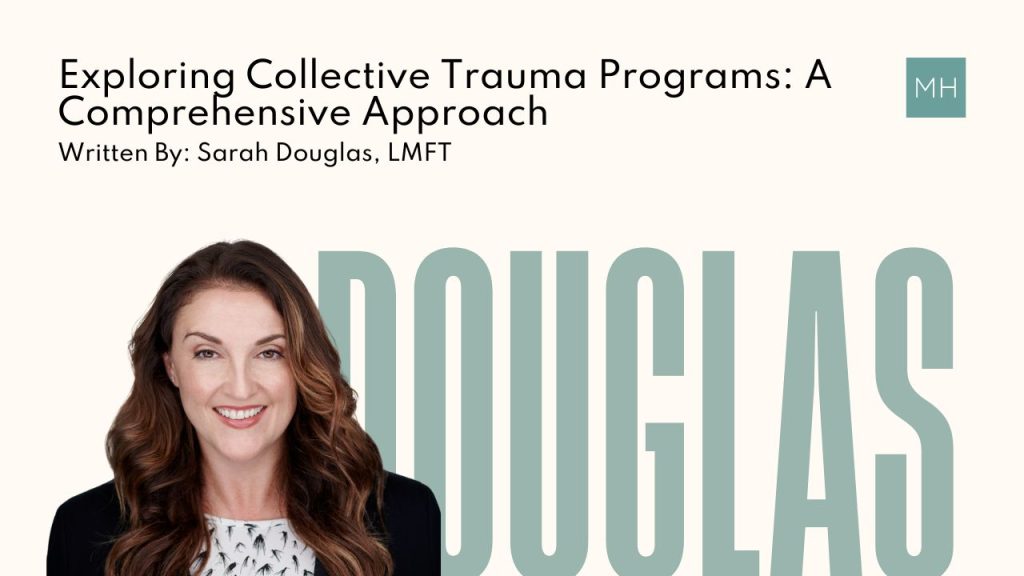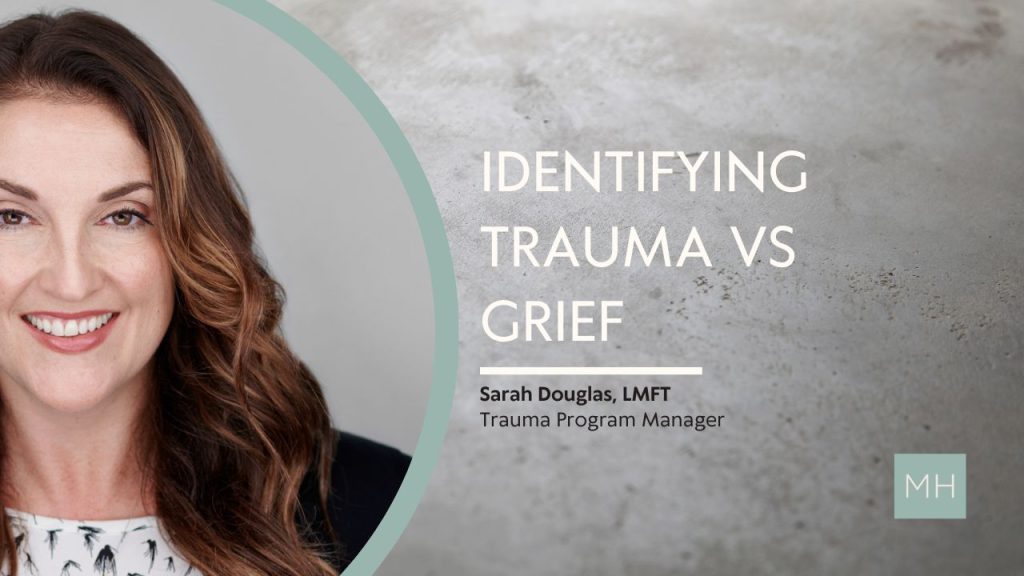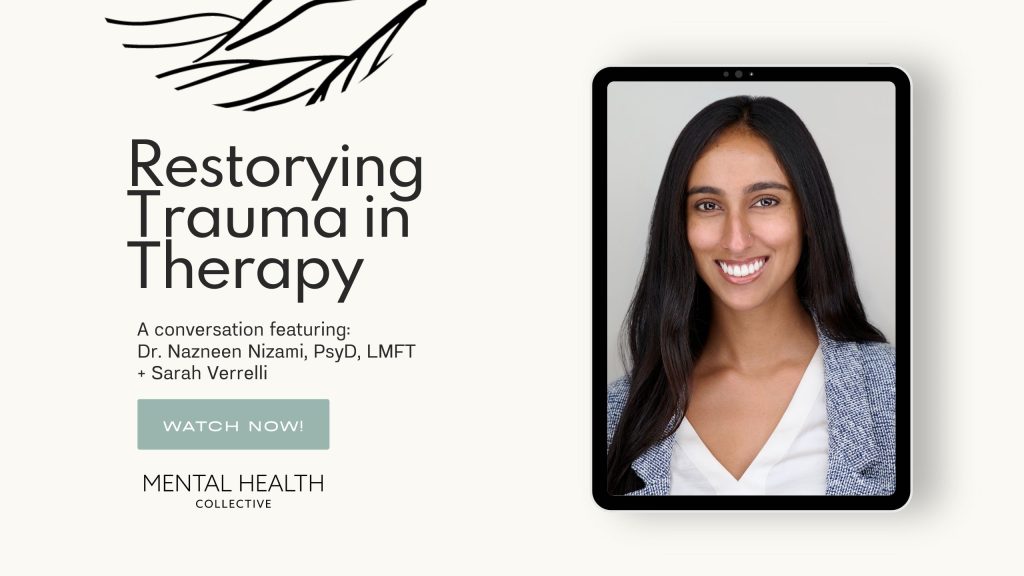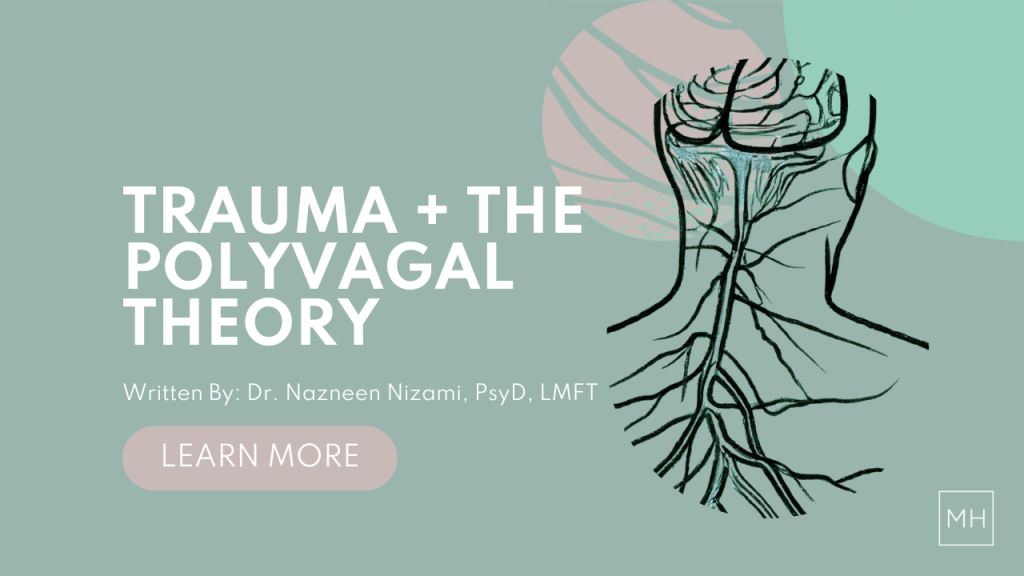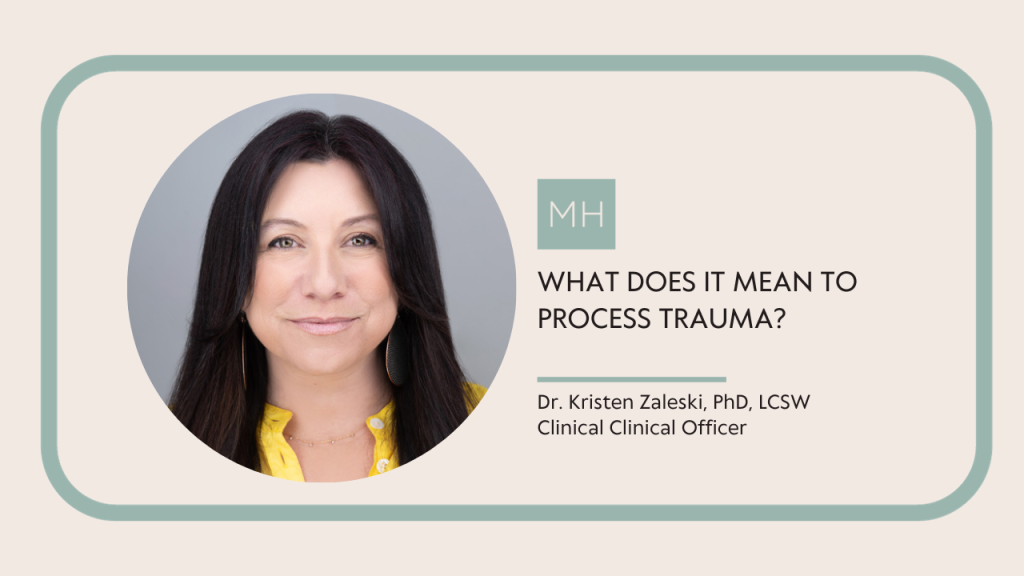Exploring Collective Trauma Programs: A Comprehensive Approach
WRITTEN BY: SARAH DOUGLAS, LMFT
In recent years, our understanding of trauma has evolved significantly, especially when examining its impact on both individuals and communities. Addressing collective trauma requires a specialized approach that goes beyond individual therapy sessions. Trauma happens in relationships and is also healed in relationships, including those outside of the therapy office. This is where programs, like The Mental Health Collective, based on Judith Herman’s three-phase recovery model of safety, remembrance, and reconnection come into play.
Dr. Judith Herman, a pioneer in the field of trauma research and treatment first introduced the three-phase model in 1993 and its efficacy is as true today as it was 20+ years ago. This is why The Mental Health Collective Trauma Programs are modeled after the phase-based approach to treatment and believe such an approach is imperative to healing from traumatic experiences.
Judith Herman’s renowned model emphasizes three key stages:
SAFETY + STABILIZATION
Establishing a safe environment is paramount. This involves creating physical and emotional safety for participants, ensuring they feel secure enough to explore and process their experiences. At this phase participants are no longer experiencing trauma. However, for the trauma survivor experiencing flash backs, intrusive thoughts/images/body memories and nightmares, just to mention a few, the trauma feels like it is happening in real time. Trauma related symptoms like those mentioned above cause emotional, physical, and cognitive dysregulation and prolong the feelings of powerlessness and danger that is experienced during trauma. The journey begins by starting slowly and gently, respecting the pace at which participants can engage with their trauma. Rushing this process can re-traumatize individuals or hinder progress.
Many trauma survivors turn to ineffective means such as drugs, alcohol, gambling, self-harm, to cope with the overwhelming symptoms. At this phase, participants are learning about trauma and their symptoms and beginning to understand why they occur and what they can do to cope. Psychoeducation alone can be very powerful in reducing self-blame and challenging beliefs like “I am going crazy”, “I should have done something different” and “I am incapable of healing”.
In addition to learning about and having symptoms normalized, participants learn different techniques like grounding exercises, relaxation methods, breath work, distress tolerance mindfulness, and cognitive behavioral strategies to manage the symptoms. Participants also learn how to take care of themselves during this phase, including how to reduce emotional and physical vulnerability. Participants learn these skills in multiple psychotherapy groups offered throughout the week and create unique coping plans with their individual providers. Participants are encouraged to practice skills when they are not needed to build confidence for using the skills when they are necessary. When participants learn these skills together, they can practice on their own, observe others practice, and provide support to one another as needed. This experience builds a sense of comradery among participants that can be helpful as treatment progresses. Participants also receive support from support staff who are trained to assist with skill application.
While building trust with peers and support staff is certainly helpful in establishing feelings of safety, developing a trusting relationship with the therapist is crucial. The therapeutic relationship serves as a secure base for exploring traumatic memories in later stages of work.
Learning skills in a safe and supportive environment, feeling equipped with a toolbox of knowledge and skills, and a strong therapeutic alliance all contribute to increasing feelings of safety and confidence in the ability to tolerate the distress they will likely encounter in the next phase of treatment.
REMEMBRANCE + MOURNING
When people think about trauma focused psychotherapy this is often the phase of treatment that comes to mind. However, it cannot be understated how crucial the first phase of treatment is. One of the most common errors clinicians make is beginning this phase of treatment before a client is ready to do so. A false start at this phase of treatment can exacerbate destabilization and increase avoidance which cannot only hinder progress it can lead to a halt in treatment and premature termination of the work.
In this stage, the focus shifts to remembering and processing the traumatic event(s). At this point in treatment participants are working to acknowledge the trauma, accepting the impact it has on their lives, and processing the trauma. The goal is to emotionally and cognitively process the memories, integrating them into a coherent narrative through storytelling, art, or other forms of expression. This stage allows individuals to integrate their experiences into their personal and collective narratives.
There is no one approach to processing traumatic experiences and often participants benefit from an integrative approach. Recognizing that trauma affects both mind and body, these programs integrate cognitive therapies, like Cognitive Behavioral Therapy, experiential therapies, like Eye Movement Reprocessing and Desensitization, with somatic modalities, such as yoga, mindfulness, or body-centered therapies. This holistic approach ensures that healing addresses the entirety of the individual’s experience. Both group and individual therapy are approached from a holistic perspective. Participants are provided with a group schedule and a team of individual providers to meet their unique clinical needs.
Group therapy forms a cornerstone of collective trauma programs. Sharing experiences within a supportive group setting can validate individual experiences, reduce isolation, and promote empathy among participants. Group curriculum includes Cognitive Processing Therapy, Janina Fisher’s Living Legacy of Trauma, Holographic Reprocessing, Grief process and Recovery, Trauma Process Group, Skills Building, Dialectical Behavioral, Exposure therapy and Sexual Trauma Survivorship, Shame Resilience, and Trauma Narrative and Autobiography. These groups are interspersed with opportunities for somatic healing in the form of equine, surf therapy, spirituality, yoga, sound bath, tai chi, art therapy, mindful movement, and safe and sound.
Group psychotherapy provides participants with a safe place to grieve and process the loss they have experienced. Loss of safety, trust, a previous sense of self, relationships, career, or future possibilities are covered in several groups. Part of recovery involves mourning these losses and acknowledging the impact of the trauma. Because The Mental Health Collective Trauma Programs are intentional in keeping groups small, participants often feel safe enough with one another to be vulnerable and experience/ express feelings related to the trauma, such as anger, sadness, or guilt, in a supportive environment.
Groups like Cognitive Processing Therapy are specifically designed to challenge harmful beliefs about oneself and the world (e.g., “I am to blame”, “I cannot trust my judgment”, “I am not safe”. This stage of treatment involves challenging and reframing these beliefs, developing a fact-based trauma narrative, processing and integrating trauma related memories. At The Collective Trauma Programs, we fully recognize not one size fits all which is why we offer diverse opportunities for processing and expression. Encouraging creative expression through art, music, writing, or psychodrama can facilitate the processing of emotions and memories that words alone may not capture.
The holistic approach to treatment is also mirrored in participants’ individual therapy journeys. While participants will have one primary therapist, it is common to have additional providers who have a specific treatment focus such as somatic therapy, sensorimotor psychotherapy, brain spotting, CPT, or EMDR to mention a few. This approach to individual therapy provides an opportunity for participants to build trusting relationships with multiple providers ultimately adding to the number of corrective emotional experiences. Laying a foundation of healthy trusting relationships in treatment is crucial for the final stage of Judith Herman’s recovery model, Reconnection.
RECONNECTION + INTEGRATION
Rebuilding social connections and reintegrating into communities is the final phase of Herman’s model and focuses on restoring trust and fostering a sense of belonging, crucial for collective healing. Feeling loss without purpose or direction is a common experience for trauma survivors.
After processing the trauma, survivors work on rebuilding their lives.
Trauma can lead to feelings of disconnection and isolation. In this stage, individuals work on restoring old relationships and building new ones. Family or couples therapy may be introduced in this phase of treatment if rebuilding these relationships is a goal of the participant. Several groups are offered to aid in the development of new and healthy ways of living life including Transitions, Post-traumatic growth, and Healthy Relationships to mention a few. This phase may also include developing new relationships and doing so with the helpful guidance of providers.
Developing life goals and direction is another goal of this phase. Participants are encouraged to gradually engage in meaningful activities and pursue goals. Participants are supported by their treatment team to pursue new opportunities, whether it be volunteering at the local animal shelter, registering for college classes, or establishing a community for sobriety, the focus is on building connection, finding purpose, and being in the driver seat of your life. Participants are often surprised at this phase of treatment with how much energy they have now that they are not expending all their energy on managing trauma-related symptoms. Many survivors find meaning in their experiences by helping others, engaging in advocacy, or using their experiences to foster personal growth. The exciting part of this phase is that participants often have the energy and confidence to create new meaning and take on new challenges that previously seemed out of reach.
Developing a new sense of self that is not defined by the trauma is another goal of this phase. This phase is an opportunity to focus on the strength and resilience necessary to come this far in their healing journey and then choose how they want to be defined moving forward in life. This is not to pretend that the trauma did not happen but to develop a new sense of identity that incorporates the trauma but also recognizes their resilience and growth.
The Mental Health Collective Trauma Programs operationalize Herman’s model through a variety of therapeutic practices and modalities. Unlike individual trauma, collective trauma affects entire communities, cultures, or societies. Thus, addressing it requires a communal effort that acknowledges shared experiences and systemic influences. The Mental Health Collective Trauma Programs foster resilience and empower communities to confront their past while envisioning a healthier collective future. Through these initiatives, we not only honor the stories of those affected by collective trauma but also pave the way for a more compassionate and cohesive future.
In conclusion, The Mental Health Collective Trauma Programs, grounded in Herman’s model and integrating diverse therapeutic modalities, play a crucial role in healing communities. By providing safe spaces, fostering remembrance and mourning, and facilitating reconnection, these programs empower individuals to confront and transcend their shared traumas. As we continue to navigate complex societal challenges, investing in such programs becomes increasingly vital for fostering understanding, resilience, and collective well-being.
DO YOU HAVE A QUESTION?
Send our team a message or call 888.717.9355
